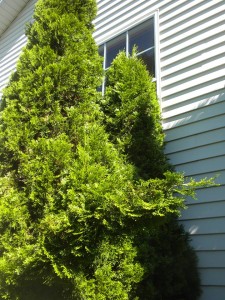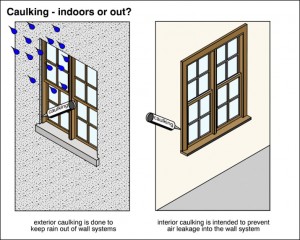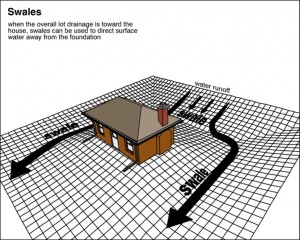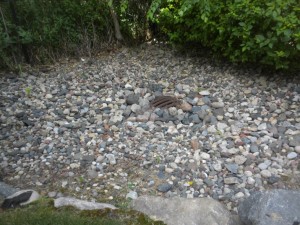 Trim the bushes…then fix the grade!
Trim the bushes…then fix the grade!
Winter is closer than you think, and it’s time to begin winterizing your house. Obviously I’m not talking about cleaning gutters at this stage! That will wait until after the leaves have fallen.
Prune shrubs and bushes first. This will let you see if adjustments to grade are necessary and it will make it possible for you to inspect all of the wall surfaces. Plants and bushes damage the house. If bad enough, you could even hear a scratching or rubbing noise inside. Second, check that the grade slopes away from the house, so that snow, turning to ice doesn’t just lay up against the walls for months. Remember with grade, you need it to be falling away from the house at an angle of 6 inches in the first 10 feet. Landscape rocks and wood chips are not the grade, they are decorative. It must be the earth below that slopes properly.
Have you purchased your tube of silicone caulk yet?
 Well, I hope that caught your attention! Step 3, this is a great time to seal up any air leaks in the walls of your home. Finding and sealing wall penetrations is the most important part of your winterizing program! Your house is most likely under slight negative pressure. That means that air will be sucked from the outside atmosphere into your home when the furnace or other fans are operating. You don’t want that to be happening in the cold of winter!
Well, I hope that caught your attention! Step 3, this is a great time to seal up any air leaks in the walls of your home. Finding and sealing wall penetrations is the most important part of your winterizing program! Your house is most likely under slight negative pressure. That means that air will be sucked from the outside atmosphere into your home when the furnace or other fans are operating. You don’t want that to be happening in the cold of winter!
Check any existing caulking carefully, particularly around doors and windows. Caulking deteriorates over time, and it will shrink or crack letting cold air into your home. Check for small holes and be certain that air is not leaking around such things as water faucets, TV and cable wires. Small holes can make a big difference. Can you hear the whisper of the wind blowing through the cracks in your house?
How do I know I filled all the cracks and holes?
There is a simple way to check for leaking around door and window frames. Turn on the furnace and any exhaust fans that you have in the kitchen and bathrooms and approach each frame with a burning candle. If the flame remains vertical, even when you are very close to the frames, you do not have a leak. Confirm this by keeping the candle very close to the frame and taking it all around the edges. If the flame bends into the room you have a frame leak that must be sealed. If the flame bends towards the window or door frame, your house is under positive pressure and this requires examination by an expert home inspector.
Listen for the soft sound of a breeze inside your home…Find and caulk all wall leaks and you will…be warm and…save a lot of money!
Doug Hastings
Certified Home Inspector, Minneapolis & St. Paul
ASHI certified inspector
Kaplan University, Home Inspection Lead Instructor
Rob ‘Pops’ Leslie
Kaplan Professionals, Retired






